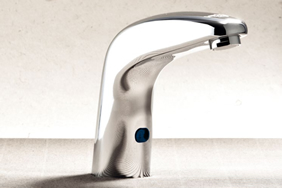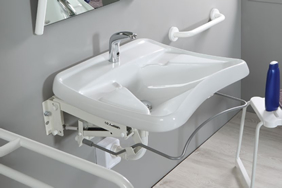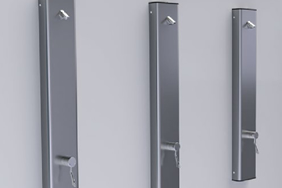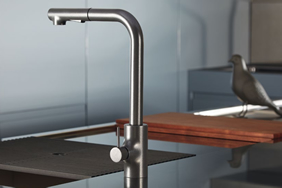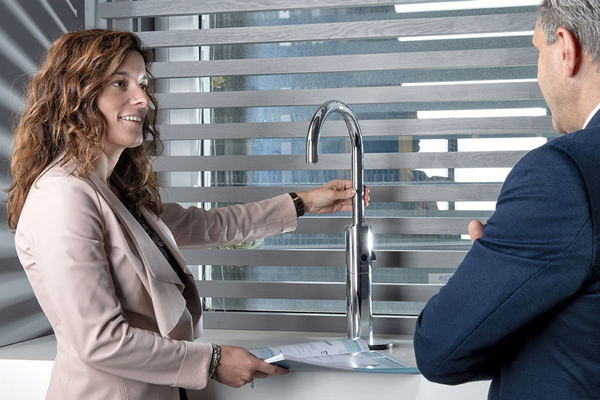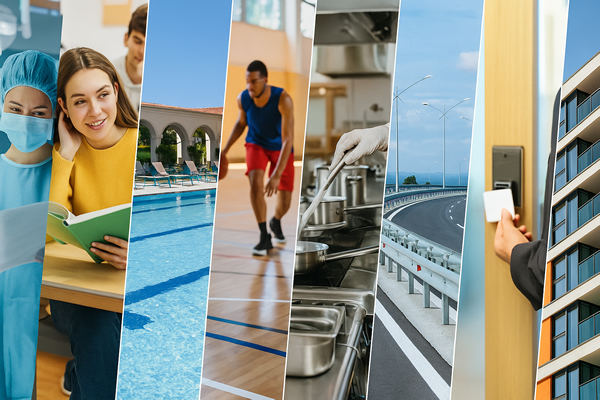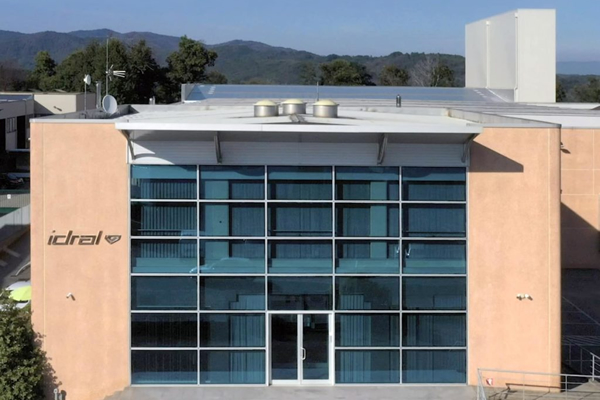
Approximately 300 litres of water are consumed daily by an Italian, and many of these are wasted, for example by leaving the tap running while brushing one's teeth, or while soaping oneself in the shower, or even while loading the dishwasher.
How can we avoid waste, doing the environment a favour, and at the same time significantly reduce the cost of the bill?
There are already well-known and widespread expedients such as the installation of flow restrictors that add air to the water jet, or resorting to so-called 'cool start' mixers, i.e. preventing the boiler from being switched on when hot water is not strictly needed. Electronic taps, with which almost all public bathrooms are equipped, fit perfectly into such a framework.
While this type of modern tap was at first only the prerogative of places such as airports and stations, there are now a great many commercial premises that have installed them and use them with satisfaction.
So why not also adopt them in your own homes?
These taps guarantee, on average, a water saving of more than 70% compared to a normal tap! In fact, this technology manages to reduce waste and use water only for the time needed by the user, preventing water from flowing unnecessarily when it is not needed.
The use of photocell faucets is very simple: they are activated by approaching the sensor, usually LED, located below the spout, and the jet ends as soon as the user moves his hands away from the sensor.
Since it is never necessary to touch the electronic faucets during use, this type of faucet is also the best solution in terms of hygiene, so as not to come into contact with dirt residues and bacterial outbreaks, which are generally widespread in places used by thousands of users, and to a lesser extent in our homes.
In addition to this, almost all electronic taps are equipped with lithium batteries that, with modern technology, do not require constant maintenance and can last up to seven years. In addition, they are equipped with a safety device that interrupts the water supply after a certain period of time even if one inadvertently leaves any object in front of the sensor.
For these reasons of hygiene, water efficiency and convenience, more and more private users are deciding to switch to electronic taps and fittings and make a considerable technological leap in the direction of a hi-tech bathroom.
Their ideal use is in domestic environments where there are children, the elderly, people with disabilities, because they are easy to use, and make hand washing or showering a pleasant and relaxing moment, free of any stress or frustration.
Not only in the bathroom, but also in the kitchen
But not only in the bathroom, many electronic taps are also appearing in the kitchen, as they offer the advantage of not having to touch the tap handle to turn the water on and off with your dirty hands while you are busy preparing more or less elaborate recipes: simply bring your hand close to the sensor to get the water jet.
Of course, the selling prices of electronic taps are slightly higher than traditional mid-range taps, but if one then thinks of the subsequent savings on utility bills, they can be much cheaper.
The contribution made by electronics to the mechanics of the faucet is such that it increases its performance in terms of quality, reliability and efficiency, ensuring its continuous and safe use over time.
The tap revolution started many years ago, but in recent years it has become commonplace, as awareness against waste has become part of everyone's conscience, for a more conscious use of the resources the planet offers. For an innovative and ecological choice, electronic taps and fittings appear to be the right combination of modernity and attention to the future.





